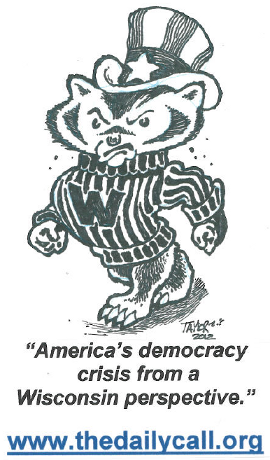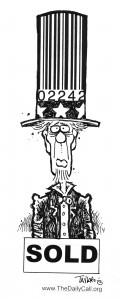Most freight railroad insurance policies couldn’t begin to cover damage from a moderate oil train accident, much less a major disaster. And the Department of Transportation’s own database of oil train incidents is flawed because some railroads and shippers provide incomplete information that far understates property damage.
Those conclusions come from a DOT analysis of its own rule proposed to address the series of troubling derailments across North America as shipments of oil by rail surge.
The department issued the analysis Aug. 1, the same day it published its proposed oil train safety rule that is meant to create what Transportation Secretary Anthony Foxx calls a “New World Order” in oil trains regulations, including by requiring sturdier tank cars, tightened speed limits and improved brakes for the trains carrying an ever-greater amount of crude oil through communities from Southern California to Albany, N.Y.
The rule would not expressly address the insurance issue, except to cite the general liability landscape as part of the need for the rule, which seeks to prevent the worst disasters from happening and mitigate damages from those that do.
Pennies on the dollar for damages
Gaps in insurance coverage became an issue after the July 2013 disaster in Lac-Mégantic, Quebec, which occurred when a train that had been left unattended careened down an incline, derailed and charred much of the downtown area, killing 47 people. The damages from that wreck could stretch into the billions of dollars, but the railroad responsible for the derailment carried only $25 million of insurance and wound up declaring bankruptcy.
DOT’s analysis says most of the largest railroads commonly carry around $25 million in insurance, though that can rise to as much as $50 million for trains hauling certain kinds of hazardous chemicals. Smaller railroads — such as the one in the Lac-Mégantic disaster — often carry much less than that.
But the agency’s Pipeline and Hazardous Materials Safety Administration estimated that the average derailment that spills crude oil will mean $25 million in total costs — bumping up against most of even the largest railroads’ current insurance limits.
For “higher-consequence events” — such as the one in Lac-Mégantic — “it appears that no amount of coverage is adequate,” the analysis says. That’s because the maximum amount of coverage available on the market is $1 billion per carrier, per incident.
Running bare
“You should know the railroads are used to running bare — without adequate insurance,” said Fred Millar, an independent rail consultant who has criticized the government’s oversight of oil trains. “And the situation that is described in the [analysis] from Lac-Mégantic is only just the tip of the iceberg. The railroads basically know that they have cargoes that can cause massive, enormously greater death and destruction than what happened in Lac-Mégantic.”
Devorah Ancel, an attorney for the Sierra Club, said insurance coverage “needs to catch up with the heightened risk that is part of this industry now,” because otherwise “taxpayers end up covering it.”
The Association of American Railroads declined to comment, saying the group is still reviewing the pending rule and its supporting documents, including the regulatory analysis, and the American Petroleum Institute said it would file its comments as part of the public comment period.
“We are working closely with regulators and the rail industry in a comprehensive effort to enhance safety through accident prevention, mitigation and response,” API said.
But railroads know they’re underinsured and have groused about the status quo, particularly considering the fact that energy companies that ship oil and ethanol largely do not bear any liability for an incident once their product is loaded onto a train. And under “common carrier” regulations, railroads cannot refuse a shipment any kind of material assuming it meets proper regulations.
Warren Buffett: Stick it to taxpayers
Warren Buffett’s BNSF railroad, the pioneer in the oil train industry, has been requesting that railroads get some of the same protections now afforded to the nuclear power industry, using the Price-Anderson Act as a model. That law requires power companies to contribute to an insurance fund that would be used in the event of an accident, and it also partially indemnifies the nuclear power industry.
The DOT analysis also points to a systemic weakness in the way the federal government collects data on derailments of crude oil and ethanol trains. In the section dealing with the probability of major rail accidents, the analysis observes that it’s “impossible to isolate the derailment rate of only crude oil and ethanol trains” due to “limitations in the reported data.”
That’s because PHMSA requires an incident report to be filed only if the incident led to the release of a hazardous material — so derailments that did not result in a spill aren’t included. As a result, even some dramatic accidents aren’t included in the database — for instance, one earlier this year that resulted in a crude oil train dangling over Philadelphia’s Schuylkill River.
Feds in the dark on risks
Separately, DOT’s Federal Railroad Administration maintains data on derailments, including how much hazardous material was released — but doesn’t identify what type of substance it was. “As a result, it is impossible to use FRA data to identify crude and ethanol derailments,” the department said.
And the data that is reported, particularly to PHMSA, is often inaccurate, largely because it is self-reported by railroads or shippers, according to the analysis. And these self-reports often underestimate the damages done in spill incidents.
According to the analysis, damage information reported to PHMSA is typically “only the most basic costs” such as the value of spilled petroleum and damage to tracks and cars.
“PHMSA believes that response costs and basic cleanup costs, when they are reported, do not represent the full costs of an accident of the response,” the report said.
Underreporting damages, particularly for environmental cleanup costs, ends up hiding the true impact of a spill from policymakers, Sierra Club’s Ancel said. She hopes the pending rule will address the issue.
“It is extremely important that the industry is required to adequately report — and there should be some sort of mechanism in the rule where the agency has inspectors that are ensuring that they are,” she said. “So not only should the industry be on the hook for reporting, but the agency needs to be able to have the resources to ensure that they are.”




